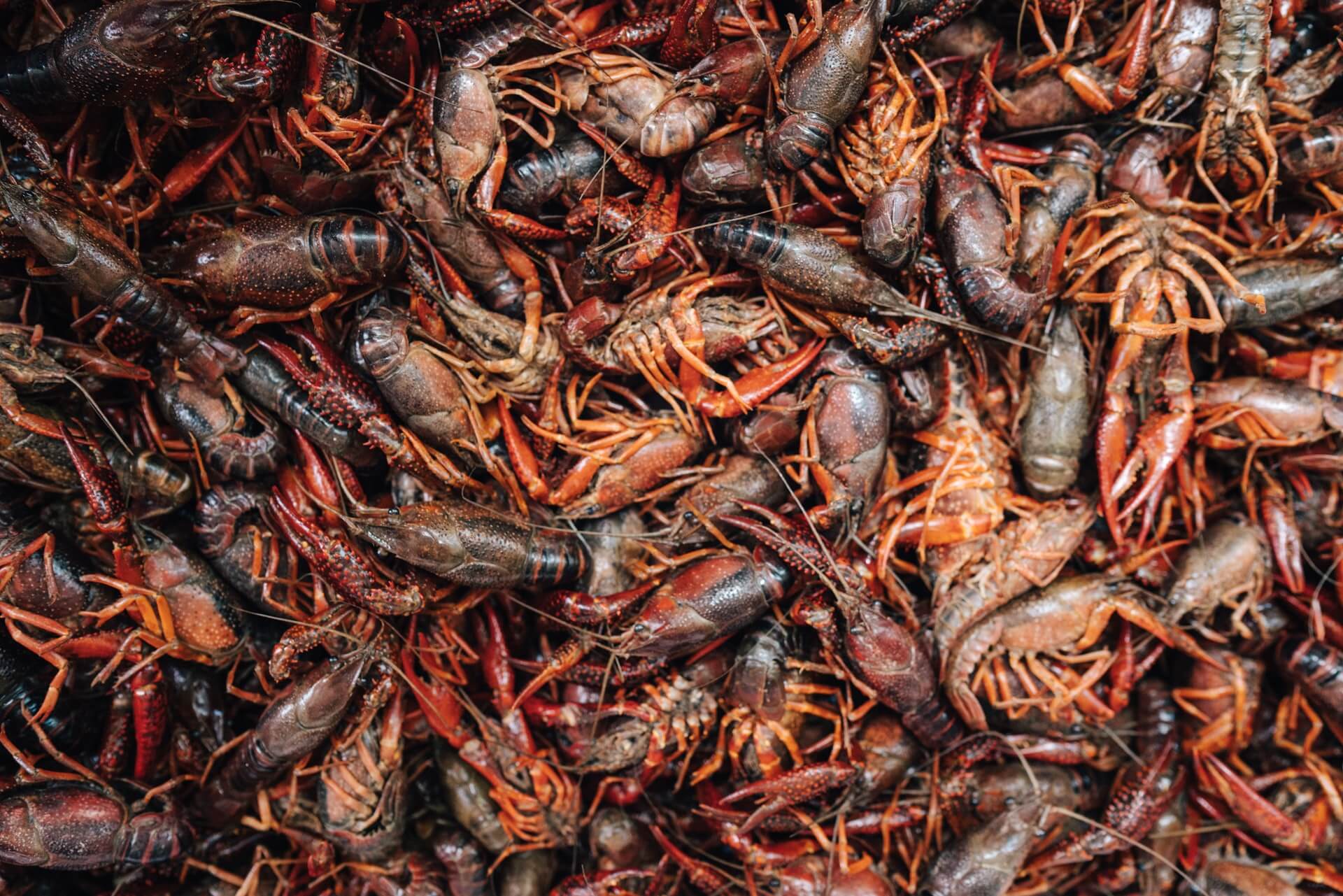
Because reproduction is somewhat synchronized in pond-reared crawfish, ponds are routinely flooded in autumn to coincide with the main period of reproduction. As the water level drops, additional crawfish burrows appear lower on the levee and are sometimes found on the pond bottom however, the burrows on the pond floor often contain a high percentage of non-reproductive crawfish, such as males and immature juveniles. Prior to draining, some mature crawfish burrow near the waterline. Crawfish ponds are usually drained during the summer months to allow for planting and growth of vegetation, which will eventually serve as the base of the crawfish food web for the following production season. Crawfish of all ages and sizes, whether mature or immature and male or female, will dig or retreat to burrows to survive periods of dewatering. Although spawning can take place in open water, the burrow provides protection while the fertilized eggs or young are attached to the underside of their mother’s tail. Burrowing activity can occur at any time but is most prevalent in late spring/early summer in Louisiana. Mature animals mate in open water where sperm is stored in a special receptacle, after which the female retreats to a burrow to eventually spawn. Unlike some more long-lived northerly species, these crawfishes have life cycles that are well adapted to farm production strategies. clarkii is capable of spawning year-round in the southern United States, and some females can reproduce more than once per year. These species are short-lived (two years or less), have high juvenile survival, and can alternate between reproductively active and inactive forms. Both species, however, possess a number of traits that are usually associated with animals that live in warm waters.


zonangulus), are classified as “temperate” species that is, they will tolerate cold winter conditions. The predominant cultured species in North America, the red swamp ( Procambarus clarkii) and white river crawfish (P.

Virtually all crawfish culture also relies on natural reproduction rather than stocking hatchery-reared juveniles. As the economics of rice production in Louisiana weakened over recent decades, many rice producers turned to crawfish as an accessory crop that can be integrated into their existing farming operations. Crawfish can be produced either in permanent rotation with a rice crop year after year in the same location or in a field rotation with rice and occasionally some other crop, with restocking of crawfish each rotational cycle. Crawfish farming fits well into many existing farm operations by using marginal agricultural lands, crop rotations, and permanent farm labor and equipment during off-peak farming periods.

A large portion of Louisiana’s crawfish aquaculture, in excess of 50 percent, is practiced in conjunction with rice production. Crawfish production typically relies on encouraging natural food sources for the crawfish direct feeding is not practical from an economic perspective. crawfish industry is found in Louisiana, these crustaceans are grown in many other states as well, including (but not limited to) Texas, California, Florida, Alabama, Mississippi, the Carolinas, Arkansas, Missouri, and Ohio. Greg Lutz, Extension Professor, Louisiana State University AgCenterĪlthough the majority of the U.S. Sacks of harvested crawfish (photo courtesy of Greg Lutz, Louisiana State University AgCenter).


 0 kommentar(er)
0 kommentar(er)
